Lady Fu Hao: Brave Warrior Skilled Strategist And China’s First Female General
A. Sutherland - AncientPages.com - She was a tough warrior and one of the most highly regarded monarchs of the Shang Dynasty (ca 1600-1046 BC). This article is devoted to Lady Fu Hao (ca. 1200 BC), a brave woman who was a remarkable, courageous, and skilled warrior.
China's General - Fu Hao is known mainly for inscriptions on 350 oracle bones of the Shang Dynasty. The oracle bones are the earliest Chinese written records.
She was born at a time when Chinese society was dominated by men and women had their traditional duties in the home.
 Lady Fu Hao - China's First Female General of the Shang Dynasty. Source
Lady Fu Hao - China's First Female General of the Shang Dynasty. Source
Instead for staying at home, Lady Fu Hao led military campaigns to protect her kingdom.
She was victorious many times, but the fourth and final military campaign against the Bafang tribe in the southwest part of China was her last. Fu Hao died of exhaustion after a carefully prepared and well-planned ambush, in which the enemy fell instantly.
In "Notable Women of China" by B. Bennett Peterson, we read:
“… this time, sharing command of the army, she [Fu Hao] fought beside her husband. Wu Ding attacked a neighboring tribe allied with the Bafang, and when the Bafang moved to aid them, they fell into a trap by Fu Hao. Again the Shang forces were victorious and Fu Hao was celebrated as the most outstanding military leader of the country. Shortly after returning to Anyang, however, she fell ill from exhaustion. While she was ill, her only son, Xiaoyi, died and she herself died shortly thereafter…”
350 Oracle Bones Of Shang Dynasty Refer To Fu Hao
Fu Hao was the first Chinese female general, a royal consort, a mother, a high priestess and a remarkably skilled strategist. She fought to defend the Shang dynasty in Bronze Age China (ca. 1600–1046 BC).
She was one of the 60 wives of Wu Ding, the dynasty's 21st king, who entered into matrimonial alliances with bordering clans to consolidate his kingdom. Practically, Fu Hao was not one of the many wives because she rose to prominence due to her courage and high intelligence, winning the king's confidence.
When she died at around 1200 BC, Wu Ding and her husband, built a tomb for her on the edge of the royal cemetery in the Shang capital of Yinxu.
Fu Hao is known mainly from inscriptions on 350 oracle bones of the Shang Dynasty. The oracle bones are the earliest Chinese written records. From these inscriptions and from the presence of weapons and other artifacts discovered in her tomb, it can be determined that Fu Hao was a general responsible for several successful military campaigns for the Shang Dynasty.
Trusted General Fu Hao Led Many Campaigns
“It appears she not only directed her own troops but also served as the ancient Chinese version of a task force commander in campaigns that included forces led by other generals. She participated in virtually every important military campaign at the height of Wu Ding’s reign.
Lady Fu Hao personally asked for and received a commission to lead her large army to the north to challenge the dangerous Tu Fang, a tribe of invaders from the north who had been a problem since the beginning of the reign of Wu Ding.
For a year and a half, Fu Hao and other Shang generals, including Wu Ding himself, led repeated assaults against the troublesome tribe of Tu Fang. With the Tu Fang defeated, Fu Hao then led Shang forces against other attacking forces. She was victorious once again.
She Had His Husband King Wu Ding’s Full Confidence
Wu Ding had such faith in her skills as a warrior that he gave her a fiefdom on the borders of his kingdom. She was to defend the borders and launch assaults against other tribes from her stronghold.
Fu Hao was highly respected and obviously had the king's ultimate confidence.
Curious Location Of Lady Fu Hao's Tomb
Strangely, after Fu Hao died, she was buried in a tomb across the river from the main royal cemetery. This was unusual because it was common practice during the time to bury all members of the royal family together.
She died before King Wu Ding, and he constructed a tomb for her at his capital Yin. Because of its location, her tomb is the only royal Shang tomb to have been left undisturbed and never looted. It was located in the vicinity of Anyang, the site of the Shang capital in modern Henan province, China in 1976.
Inside the pit, there was evidence of a wooden chamber 5 meters (16 feet) long, 3.5 meters (11 feet) wide, and 1.3 meters (4.3 feet) high. The chamber contained a large number of funerary goods including ivory artifacts, pottery, more than 2,000 jade, a bronze battle ax (a symbol of her military authority), a hundred of other weapons. The bronze goods alone totaled 1.6 metric tons.
After the death of his wife, Wu Ding made a number of sacrifices in the location of her tomb. He needed her spiritual assistance in defeating other enemies who planned to wipe out completely the Shang Dynasty.
Written by – A. Sutherland - AncientPages.com Senior Staff Writer
Copyright © AncientPages.com All rights reserved. This material may not be published, broadcast, rewritten or redistributed in whole or part without the express written permission of AncientPages.com
Expand for referencesReferences:
Loewe M. Shaughnessy E. L. The Cambridge History of Ancient China
Peterson B. B. Notable Women of China
More From Ancient Pages
-
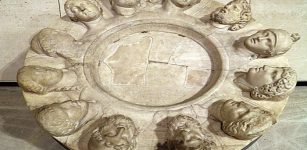 ‘Altar Of Twelve Gods’ At Gabii, Italy Was Once An Important Ancient Place
Civilizations | Apr 1, 2023
‘Altar Of Twelve Gods’ At Gabii, Italy Was Once An Important Ancient Place
Civilizations | Apr 1, 2023 -
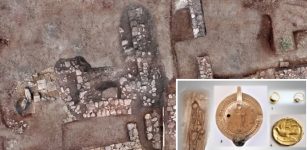 Ruins Of Long-Lost Ancient City Of Tenea Built By Trojans Discovered
Archaeology | Nov 21, 2018
Ruins Of Long-Lost Ancient City Of Tenea Built By Trojans Discovered
Archaeology | Nov 21, 2018 -
 A Glimpse Into The Past – Sights And Sounds Of St. Paul’s Cathedral Recreated
Archaeology | Oct 8, 2021
A Glimpse Into The Past – Sights And Sounds Of St. Paul’s Cathedral Recreated
Archaeology | Oct 8, 2021 -
 Xibalba: Nine-Leveled Underground Place Of Fear Ruled By Lords Of Death In Maya Beliefs
Featured Stories | May 12, 2020
Xibalba: Nine-Leveled Underground Place Of Fear Ruled By Lords Of Death In Maya Beliefs
Featured Stories | May 12, 2020 -
 Troublesome Momus: Deity Of Irony, Ridicule, Sarcasm And Harmful Jokes In Greek And Roman Mythology
Featured Stories | Mar 14, 2022
Troublesome Momus: Deity Of Irony, Ridicule, Sarcasm And Harmful Jokes In Greek And Roman Mythology
Featured Stories | Mar 14, 2022 -
 John Dee’s Magical Mirror Used To Contact Spirits Can Be Traced To The Aztecs
Archaeology | Oct 7, 2021
John Dee’s Magical Mirror Used To Contact Spirits Can Be Traced To The Aztecs
Archaeology | Oct 7, 2021 -
 Mysterious Scottish Stone Circles On Orkney Were Used To Something Very Different Than Previously Thought
Archaeology | Sep 24, 2017
Mysterious Scottish Stone Circles On Orkney Were Used To Something Very Different Than Previously Thought
Archaeology | Sep 24, 2017 -
 What Was The Danelaw?
Ancient History Facts | Jun 4, 2016
What Was The Danelaw?
Ancient History Facts | Jun 4, 2016 -
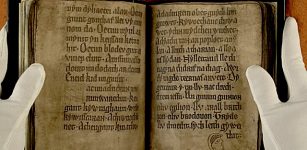 13th Century Black Book Of Carmarthen: Erased Poetry And Ghostly Faces Revealed By UV Light
Artifacts | Apr 4, 2015
13th Century Black Book Of Carmarthen: Erased Poetry And Ghostly Faces Revealed By UV Light
Artifacts | Apr 4, 2015 -
 Masroor Temples – India’s Marvelous Ancient Cave Temples
Featured Stories | Jan 23, 2016
Masroor Temples – India’s Marvelous Ancient Cave Temples
Featured Stories | Jan 23, 2016 -
 Mysterious Rongorongo Script Remains Undeciphered – Does It Contain A Prophetic Warning?
Featured Stories | Mar 24, 2014
Mysterious Rongorongo Script Remains Undeciphered – Does It Contain A Prophetic Warning?
Featured Stories | Mar 24, 2014 -
 Chickens Were Introduced To Britain, Mainland Europe, And Northern Africa Later Than Previously Thought
Archaeology | Jun 13, 2022
Chickens Were Introduced To Britain, Mainland Europe, And Northern Africa Later Than Previously Thought
Archaeology | Jun 13, 2022 -
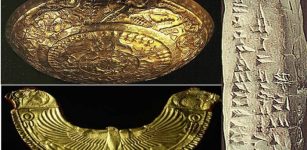 Forgotten Ancient Ugarit: One Of The Flourishing And Oldest Cities Of Canaan
Featured Stories | Jun 15, 2023
Forgotten Ancient Ugarit: One Of The Flourishing And Oldest Cities Of Canaan
Featured Stories | Jun 15, 2023 -
 Ruins Of Roman Temple From Reign Of Emperor Antonius Pius Unearthed In Egypt
Archaeology | May 15, 2018
Ruins Of Roman Temple From Reign Of Emperor Antonius Pius Unearthed In Egypt
Archaeology | May 15, 2018 -
 Mysterious Railway Car Discovered Under An Old Fortress In Antwerp, Belgium
Archaeology | Apr 12, 2024
Mysterious Railway Car Discovered Under An Old Fortress In Antwerp, Belgium
Archaeology | Apr 12, 2024 -
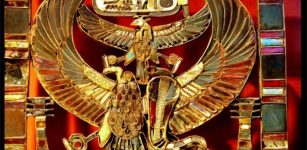 Setne Khamwas And The Book Of Magic Written By Thoth
Egyptian Mythology | Jan 20, 2016
Setne Khamwas And The Book Of Magic Written By Thoth
Egyptian Mythology | Jan 20, 2016 -
 Maat – Ancient Egypt’s Most Important Religious Concept
Egyptian Mythology | Apr 4, 2018
Maat – Ancient Egypt’s Most Important Religious Concept
Egyptian Mythology | Apr 4, 2018 -
 Did Ancient Oshoro Stone Circle Serve As A Portal To The Spirit World?
Featured Stories | Aug 19, 2017
Did Ancient Oshoro Stone Circle Serve As A Portal To The Spirit World?
Featured Stories | Aug 19, 2017 -
 Lacrosse Was Invented By Native American Indians
Ancient History Facts | May 1, 2016
Lacrosse Was Invented By Native American Indians
Ancient History Facts | May 1, 2016 -
 Bellerophon: Great Hero Of Homer’s Iliad Who Was Punished By Gods For His Pride And Arrogance
Featured Stories | Jul 13, 2021
Bellerophon: Great Hero Of Homer’s Iliad Who Was Punished By Gods For His Pride And Arrogance
Featured Stories | Jul 13, 2021
